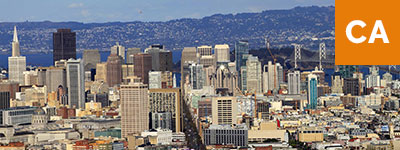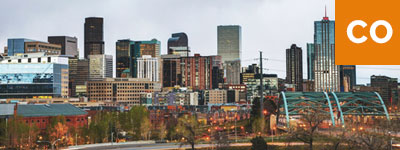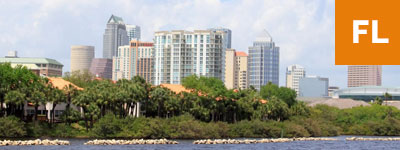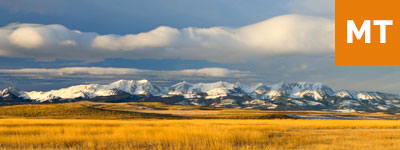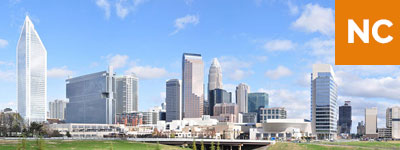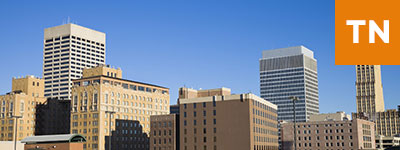Motorcyclists have to handle an accident differently than a car driver would. These tips can help your legal case.
It’s well-established that riding a motorcycle is more dangerous than driving a car. Nationally, the rate of fatalities for motorcyclists is 28 times higher than other motor vehicles.
When it comes to recovering damages after a motorcycle accident, many motorcyclists believe that they’re not on equal footing with car drivers. There’s a perception in the motorcycling community that they’re often treated unfairly by police officers, other motorists, and even jurors. There’s an implicit bias against motorcyclists that often prevents the motorcyclist from recovering the same amount in damages for an injury that they would’ve if they’d been driving a car.
We’ll take a look at why this happens and what you can do to be treated fairly in your California motorcycle accident case.
In 2017, there were 529 California motorcyclist fatalities, which is 62.79 per 100,000 motorcycle registrations.
Causes of motorcycle accidents
The majority of motorcycle accidents are between a motorcycle and a car.
| Unsafe lane changes | A car driver fails to check their blind spot when changing lanes. |
| Speeding | Speeding can be either on the part of the motorcyclist or a car driver. It’s a major cause of motor vehicle accidents because speeding decreases the chance that a driver will see and react to other vehicles or obstacles in the amount of time required to prevent a collision. |
| Driving under the influence (DUI) | Driving under the influence of alcohol or drugs impairs the driver’s ability to operate a vehicle safely. |
| Lane splitting | This is the practice of riding a motorcycle in between two lanes of traffic. It’s especially dangerous for an inexperienced motorcyclist. Lane splitting is illegal in some states, but California law “does not allow or prohibit motorcycles from passing other vehicles proceeding in the same direction within the same lane.” This practice can also be called lane sharing or filtering. |
| Sudden stopping | Any sudden stop can be dangerous to a motorcyclist, whether they’re the vehicle that needs to stop and they’re rear-ended by a car or if they’re behind a car that stops abruptly. |
| Inexperience | A California motorcyclist who is 21 years old or more must:
These requirements must be met in order for you to be legally allowed to ride a motorcycle in California. But they don’t mean you have the experience needed to ride safely. Often, new or inexperienced motorcyclists have accidents because they’re not yet adept at maneuvering their bikes. You can practice operating a motorcycle on a closed course or in a safe spot like an empty parking lot or sparsely traveled road until you feel comfortable enough to carefully navigate in traffic. |
| Left-turn accidents | A lot of motorcycle accidents happen because the motorcyclist misjudged the distance or speed of an oncoming car, or made a right-of-way error.
A car making a left-hand turn is the single most dangerous situation for a motorcyclist. Nearly half of all motorcycle/car accidents happen in this situation at an intersection. Often, it’s because the motorcycle:
|
| Dangerous road conditions | Poor signs or signals, pavement cracks or holes, debris, and other conditions can contribute to a motorcycle accident. |
| Motorcycle defects | Although a defect in a motorcycle’s manufacturing or maintenance can have catastrophic effects, motorcycle accidents from defective vehicles are less common than other kinds of accidents. |
California lane splitting law
Lane splitting is one of those practices that everyone has an opinion about. That’s why recovering damages after an accident involving lane splitting can be tricky. Even in places like California where it’s not illegal, a police officer or judge can have an opinion about whether it’s right or wrong — and that opinion can affect the outcome of a lawsuit.
Lane splitting can cause accidents because:
- The motorcycle is traveling in close proximity to 2 or more cars.
- The motorcyclist has little ability to maneuver because it’s so close to the cars.
- Car drivers often don’t realize that a motorcycle is intending to pass in slowed or stopped traffic.
Here are some ways to stay safe while lane splitting:
- Be aware of the cars around you on all sides.
- Return to your correct lane if traffic resumes speed and is moving more than 30 miles per hour.
- Only lane-split if both lanes are moving at the same speed. If one lane is moving faster, cars in the slower lane are likely to try to move into the faster lane, which raises your likelihood of being hit.
- Be sure you have your headlights on and are wearing reflective clothing if you’re riding after dark.
- Be alert if you’re in a car’s blind spot.
- Don’t speed past slow or stopped cars; only travel at a speed that’s slightly faster than the rest of the traffic.
- Don’t pass between cars that are too close together.
Motorcyclist bias and liability
Some people have the perception that motorcyclists are less responsible drivers. Have you experienced this bias?
Although everyone is entitled to their own opinion, those opinions can harm your chances in a lawsuit.
Sure, there are motorcyclists who speed, weave, and drive irresponsibly — just like there are car drivers who do the same. But the majority of motorcyclists are good drivers who just want to enjoy the ride and reach their destination safely.
How might a stigma or bias against motorcyclists affect your personal injury lawsuit?
Presumption of liability. Police officers, insurance adjusters, and even a judge or jury might assume a motorcyclist is at fault for an accident simply because of stereotypes that they’re more reckless.
Low settlement offer. For the same reasons that one might presume liability, an insurance adjuster might offer a low settlement that doesn’t cover a motorcyclist’s injuries to the fullest extent.
Reduced damage award. Lawyers and judges try to seat jury members who don’t have implicit biases in specific cases, but jurors are human and everyone has experiences that predispose them to certain opinions. Unfortunately, sometimes that plays out as reduced damage awards in the courtroom.
How to avoid being a victim of motorcycle bias (5 tips)
Credibility and reputation matter.
If you’re in a motorcycle accident, there are ways to establish yourself as a responsible, caring motorcyclist and it might help your case.
- Be kind. If you’ve been involved in a collision, show concern for the other driver’s condition. Don’t make accusations of fault, and be courteous. You shouldn’t apologize because an apology can come across as an admission of fault, but you can be concerned without being apologetic. If you’re in court and the other driver is on the stand as a witness, those first moments after an accident and their first impressions of your demeanor can make a big difference in their testimony.
- Wear a helmet. Every time. For one thing, it’s the law in California. But wearing a helmet also demonstrates that you’re concerned for your own safety, and that you’re aware of rules and best practices for motorcycling.
- Drive safely. A witness can testify that they saw you driving carefully, being respectful of other motorists, and traveling at a safe speed. That can help your case and demonstrate that you’re responsible and less likely to have caused an accident than someone who was speeding, weaving, or being otherwise unsafe.
- Document the scene. Evidence like the road and weather conditions, the condition of your motorcycle and any involved cars or property, and traffic signals or signs can all be important. If it’s safe to do so, take as many photos as you can.
- Obtain witness contact information. A witness can be anyone at the scene, whether they were directly involved, or not. Whether or not there’s a police report, witness statements can make or break the success of a lawsuit. Be sure that you have a witness’ name, phone number, email address, and any other relevant information.
Who’s liable in a motorcycle accident?
California is a comparative fault law state. That means in a personal injury lawsuit, the court can determine that the plaintiff and defendant both bear some liability for the accident. It will ultimately assign a percentage of fault to each party and the plaintiff’s award would be reduced by that amount.
Assigning fault in a California motorcycle accident
Lane splitting is fuzzy under California law. While it’s illegal in most states, it’s not specifically prohibited in California as long as it’s done carefully and safely.
But what if an accident happens while a motorcyclist is lane splitting? Who’s at fault?
Consider this scenario:
Michael Motorcyclist is on his bike traveling south on the 405. It appears to Michael that traffic is crawling along ahead, so he reduces his speed to stay within the flow of traffic.
Eventually, the traffic comes to almost a full stop. He has the opportunity to move between the cars in the right-most and middle lanes, and he decides to take it. The traffic is moving steadily at about 15 miles an hour in both lanes. He has a good sight line, no 18-wheelers blocking his view, and he thinks it’s safe to cut in between.
He slides between the traffic, moving about 25 miles per hour. After a minute or two, the traffic in the middle lane accelerates to about 35 miles per hour. Michael still feels safe, though, and he accelerates to that speed, still in between the lanes.
Unfortunately, the right lane didn’t accelerate as fast. Debbie Driver decides she’s not waiting in the right lane and she’s going to pull into the middle so she can pick up speed. She checks her mirrors and uses her signal correctly, but she doesn’t see Michael traveling in her blind spot. She begins to change lanes and they collide, resulting in significant injuries for Michael.
Who’s at fault?
Debbie did almost everything right. She used her signal, checked her mirrors, and was moving the appropriate speed for the flow of traffic. Still, she caused the collision by switching lanes with little warning.
Michael was riding legally between lanes and he was traveling at a responsible speed, though he should’ve moved back into a lane once the middle lane picked up speed.
Both Debbie and Michael were obeying the law and being responsible drivers, but the accident still happened. Michael brought a lawsuit against Debbie, claiming that she should’ve looked more carefully over her shoulder before switching lanes.
The court determines that the defendant, Debbie, did cause the accident, but Michael — the plaintiff — was also partially at fault.
Michael is awarded damages in the amount of $100,000 for his injuries. However, since the court found that he was 30% liable for the accident, his damage award is reduced by that amount. Michael ultimately recovers $70,000 for his injuries.
What to do after a California motorcycle accident
If you’re in a motorcycle accident, there are a few actions you can take immediately at the scene that will preserve evidence and can help your legal case. Your immediate medical needs are the first priority, though. Only worry about collecting evidence if you’re physically able to do so.
- Obtain information from the drivers of all involved vehicles. Get each driver’s name, driver’s license number, phone number, vehicle registration, and license plate number. This will be important when you’re dealing with your insurance company.
- Call the police. A police report is an important part of your claim documentation.
- Gather information from witnesses. Anyone who saw the accident or who saw you riding responsibly immediately prior to the accident could be a valuable witness. You don’t need to take a statement, but it’s important to get each person’s name and contact information.
- Take photos at the scene. A picture is worth a thousand words. Take photos of all the vehicles involved at several angles to show damage. You should also take pictures of road conditions, any other property damage, weather conditions, street signs or signals, or any other factors that might have affected the crash.
- Get a medical evaluation. Some injuries aren’t immediately visible. You might begin to feel the effects of a motorcycle accident days or weeks afterwards. It’s important to visit a hospital, doctor, or urgent care facility immediately to have an assessment of your medical condition. Otherwise, it will be hard to prove that symptoms that appear later were related to the accident.
California accident reporting requirements
If you’re in any motor vehicle accident in California, including a motorcycle wreck, you must report it to the police if:
- Anyone was injured
- The dollar amount of damage is $1,000 or more
- There are aggravating circumstances like DUI on the part of any involved driver
If anyone was injured or if there’s a possible DUI, you’re required to call 911 to report an accident. If there are no injuries or aggravating circumstances, you can call the police non-emergency number.
In addition, you’re required to report the accident to the California DMV if:
- Anyone was injured, even if it’s minor and doesn’t require medical treatment
- Property damage is $1,000 or more
- Any driver is operating a vehicle without a license
- Any driver is intoxicated
It’s also important to report the accident to your insurance company. Your insurer will work with the other driver’s insurer to settle your claim.
Find a California motorcycle accident lawyer
A motorcycle case might be more difficult to settle than an accident between 2 cars. You could be up against motorcyclist bias (whether or not you realize it), and even the insurance adjusters might not be negotiating on an even playing field.
That’s why you need a personal injury lawyer who’s job is to advocate for you and your rights. If you were operating your motorcycle safely and responsibly, you should have all the same rights and privileges as any other driver.
Your lawyer knows all the tricks of the trade — they’ll make sure you’re treated fairly to get the damages you need and deserve from your motorcycle accident. We invite you to use the free Enjuris Personal Injury Lawyer Directory to find the California attorney who’s best-suited to take your case.
Did you know that motorcycle accident law varies by state?
Need a lawyer?
What does an injury lawyer do?
A personal injury lawyer helps individuals who have sustained injuries in accidents to recover financial compensation. These funds are often needed to pay for medical treatment, make up for lost wages and provide compensation for injuries suffered. Sometimes a case that seems simple at first may become more complicated. In these cases, consider hiring an experienced personal injury lawyer. Read more



